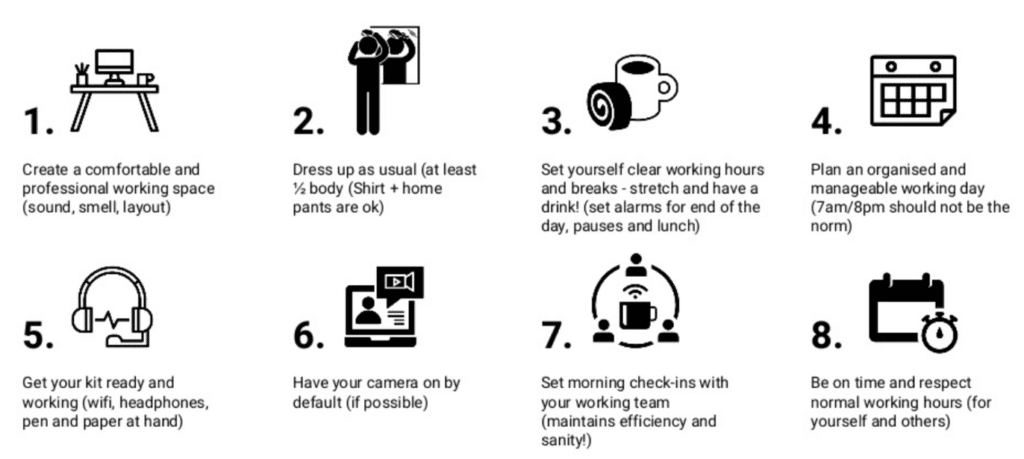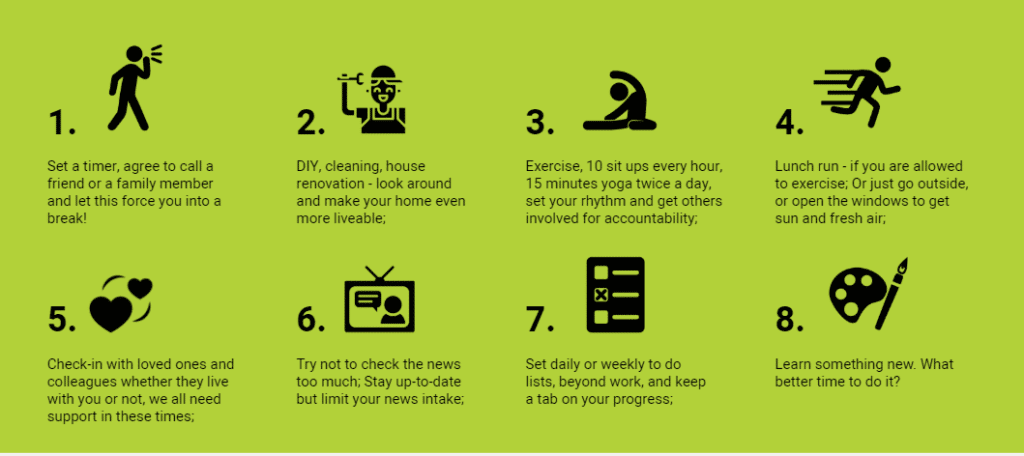Globant’s Service Design Consultant Robin Bini Schneider has put together a comprehensive and easy to read guide to Remote working, with useful tips and guidance including advice on how to run meetings, remote workshops, tools to use, and how to set-up and find a balance when working at home. We hope you find it useful as we all get to learn and adapt to new ways of working in these unprecedented times.
Start your Remote Day

Working time tips
Make your schedule visible and respect others
Make your schedule available to colleagues so that they are aware of when to contact you and when you are focusing on something. Clearly mark meetings, self-assigned working time, and schedule breaks after calls. Ensure your calendar is visible to the team and doesn’t just show you as ‘busy’
Be responsive online while safeguarding working time.
Working from home might make you feel the urge to respond at all times, but as you would do in person, you are allowed to concentrate. It’s ok to turn off slack or wait to respond to emails and hangouts, within acceptable terms.
Use live working tools to ensure visibility and engagement.
Use ‘live’/cloud working tools as much as possible to track conversations and engage those in the call.
Be empathetic and respectful of different levels of remote-readiness
Be tolerant if people get distracted, a smile on camera, make some jokes to ease the tension check-in frequently to ensure everyone is following, don’t set back to back meetings, understand if someone needs a minute away from the screen, it’s ok to explain things twice, etc.
Check-ins, traditions and celebrations to boost morale and productivity.
Team rituals and traditions help motivation and strengthen team culture. How about end of the week drinks and games with your colleagues on Zoom to celebrate the end of another successful remote working week?
Take a break!

Access to the video recording
Access presentation
This action is part of the Continuity initiative by Globant. This aims to help organizations in this crisis, to guarantee their business continuity.



